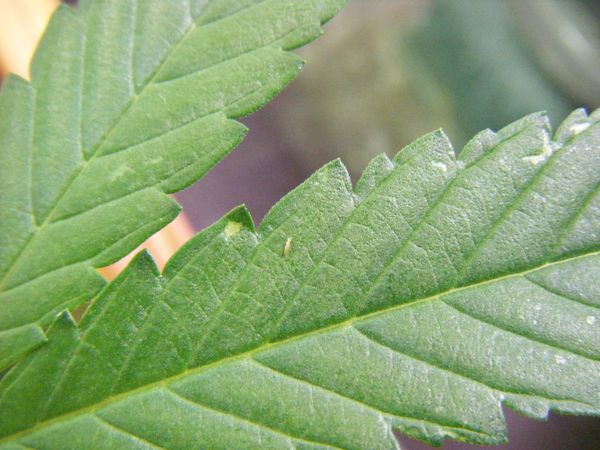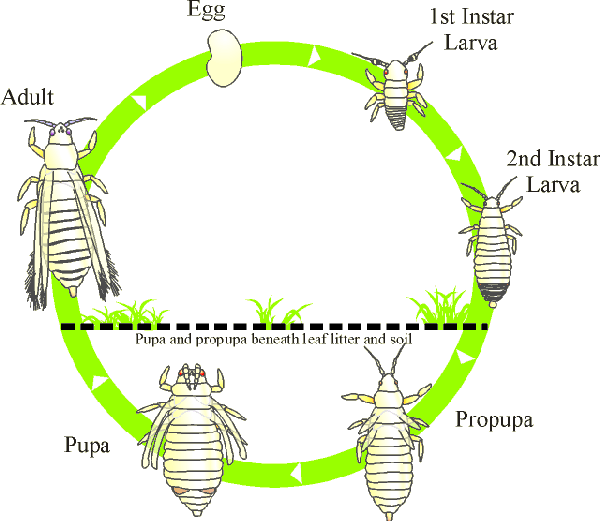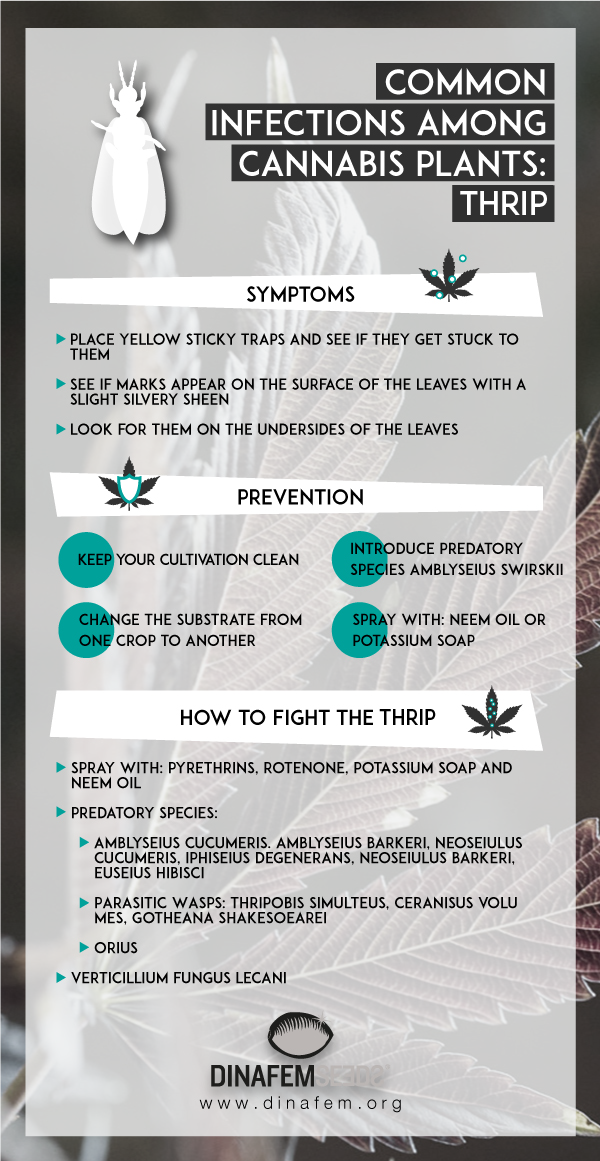- Thrips are one of the most common pests in marijuana growing.
- These fast moving small insects feed by sucking the plant sap and, although it is not one of the deadliest plagues you can suffer in your cannabis cultivation, it is important to remain attentive to their possible appearance.
- Thrips can be a serious problem if your plants are in their early stages of life (small seedlings, cuttings, etc).

Thus, if you want to get started in self-cultivation of marijuana, you should learn how to identify, prevent and eliminate this annoying guest in order to prevent your harvest from suffering. Here below we give you some tips that will help you do so, read on ...
What are Thrips?
Thrips (Thripidae) are tiny insects that belong to the order of the Thysanoptera with a length of between 1-1.5 mm. The type of Thrips that usually attacks marijuana plants is the Frankliniella occidentalis, a small yellowish-white invader. In their adult stage, they have an elongated shape and fly from one plant to another. This type of infection is most common in indoor cannabis crops as well as in greenhouses.
Thrips reproduce up to twelve times in a year, their life cycle being between one month and one year. Although it is not one of the most withering pests, it is important to combat it at its beginning because once installed, Thrips turn out to be pretty tough.

How to identify if your marijuana crop is suffering a Thrips plague?
As with all pests, time is a valuable factor that will play against you, so try to be very attentive to any signs that may indicate that your cannabis plants have been infected:
- Place yellow sticky traps and watch them daily, if your crop has Thrips, it is very likely that some of these fellows will get stuck to them.
- Thrips rasp the leaf tissue to suck the plant sap or, in the case of females, to deposit eggs (which are imperceptible to the human eye). Hence, look out for stains showing up on the surface of the leaves, with a slight silvery sheen. If the pest is widespread, these stains will become more evident as well as some small dots that are the Thrips feces.
- Thrips are normally in the medium/low areas of the plant and are visible to the human eye. However it not easy to spot them, because these insects are small and elongated and they camouflage themselves by standing parallel to the leaf veins or in the space where two leaves overlap. When they notice movement, they usually stand still hoping for their camouflage to let them go unnoticed.
- If the pest is well advanced, the leaves will become brittle by the loss of chlorophyll and they may even go dry, although it is difficult to reach this stage because remedy should be applied long before that.
How to prevent Thrips in marijuana crops?
- If you are growing marijuana outdoors or in a greenhouse, remove the weeds that grow around the plant as well as the possible remains of the previous crop.
- Change the substrate from one crop to another and get rid of the old.
- Introduce predatory species such as Amblyseius swirskii
- Spray once with a natural insecticide: Neem oil or potassium soap.

How to fight Thrips in marijuana crops?
Thrips life cycle goes through several stages and when in its larval stage, it can usually be found in the substrate, which is where it will transform into a pre-pupa. This is important, as it will be useless to focus your efforts only on eliminating adults which are already located on the stems and leaves of the plant; you should also eliminate the larvae in the substrate. So, in addition to the biological fight regarding the plant, we also recommend to irrigate with a biological insecticide in order to eliminate any larvae present in the soil.
- Spray with: there are different biological products that act by contact and are effective against Thrips: pyrethrins, rotenone, potassium soap and neem oil (repeat applications every two or three days). It is important that you make sure that you have removed the Thrips before your plants enter the flowering stage. This is why prevention is so important, because you do not want to spray any product on the flowers. If you detect the trip while already at this stage, perhaps the best option is the introduction of predatory species.
Once you have done the spraying, you can use predatory species to ensure the total elimination of this scourge. It is important not to do it the other way around as spraying insecticides will kill natural predators too. These are some of the species that we recommend using if you opt for this option.
- Amblyseius cucumeris. Amblyseius barkeri, Neoseiulus cucumeris, Iphiseius degenerans, Neoseiulus barkeri, Euseius hibisci.
- Parasitic Wasps: Thripobis simulteus, Ceranisus volumes, Gotheana Shakesoearei.
- Orius: These bugs belong to the Anthocoridae family and are predators that feed on mites and thrips.
Biological products
The biological products used to control Thrips are based on the fungus Verticillium lecani and are very effective and not harmful to the aforementioned natural predators. Thus, it can very well complement the other two treatments.




Comments from our readers
Read comments in other languages:
Did you like this post?
Your opinion about our seeds is very important to us and can help other users a lot (your email address won't be made public).